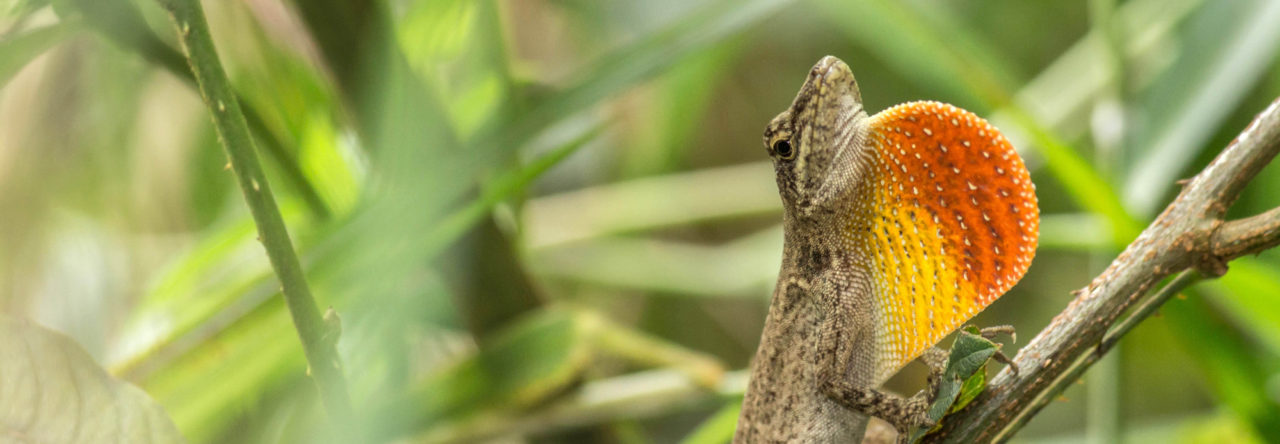
Did the lizards on this island survive Hurricane Sandy?
Long time AA readers will recall that every year, a team of researchers go to the Marsh Harbour, Abaco, Bahamas to study how curly-tailed lizards affect brown anoles and, in turn, how the presence of brown anoles affect the rest of the ecosystem on tiny islands. This research, initiated by Tom Schoener and Dave Spiller in the 1980s, has been long-lasting and has produced many interesting discoveries about anoles, ecology and evolution.
But in the last few years, the research has been bedeviled by hurricanes. In 1998 and then again in 2004, studies on the effects of curly-tails on brown anoles were terminated prematurely by hurricanes. We did learn a lot about how hurricanes affect ecosystems, including lizards, but it wasn’t so helpful with regard to understanding how brown anoles evolve in response to predation pressure. After waiting several years for the islands and lizard populations to recover, we re-initiated the experiment again in 2008. At the same time, we started a second experiment by introducing a single pair of lizards to each of seven islands, creating a replicated experiment on the effects of founder events on evolutionary adaptation.
Both experiments were moving along nicely when—what else?—another hurricane hit, Irene in 2011. As everyone recalls, Irene was a big one, and we feared the worst, but by good fortune, its effects were less than catastrophic because it hit at low tide—minimizing the extent of the storm surge—and from a direction that tended to minimize the storm surge on the particular islands we were studying. The result was that some—though not all—island populations were hit hard, but very few were demolished. In fact, I speculated that studying the effect of a population bottleneck on populations created by founder events might be particularly interesting, because some theories suggest that it takes multiple population crashes to lead to great evolutionary changes.

Hurricane Irene ripping its way through the Bahamas. Abaco is the island to the right of the arrow labelled “Freeport.”
So along comes 2012 and… another direct hit on our islands, this time by the infamous Hurricane Sandy. Although initially quite large, by the time Sandy hit Abaco, its wind speeds were less than Irene, giving us hope. But, on the other hand, Sandy slowed to a crawl, meaning that it remained over Abaco for a long time, not just at low tide, and also from a more threatening direction than Irene’s. All dangerous portents.

Photo by Jason Kolbe
Thus, with great trepidation, we returned to Abaco earlier this month, anxious to learn how our island buddies had fared. A trip to Abaco last December—admittedly, not the best anole time, even in the Bahamas—had indicated that a number of the lowest lying islands seemed lizardless. And our visit confirmed that finding. The seven islands in our founder effect study are all small and low-lying, and the lizard populations on five of them were wiped out (one of them had a female last December, but she’s apparently gone). One of the remaining islands contains but three anoles—a male and two females—and it will be interesting to observe the effect of this population bottleneck. That population—like all in this experiment—was founded by two individuals and quickly grew in size. Will it rebound again, and just as quickly?
Read More























